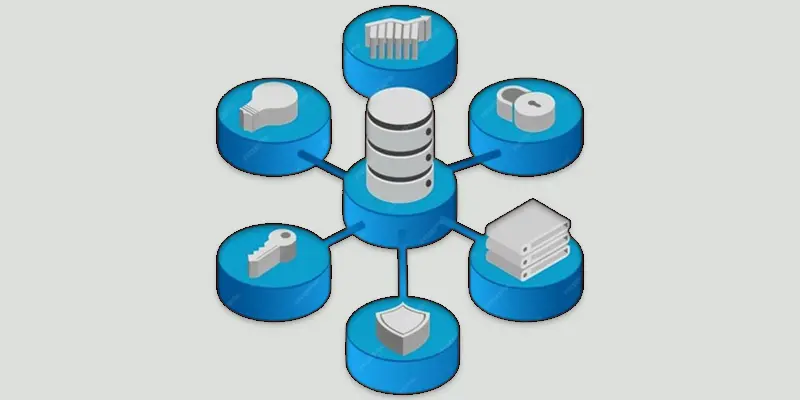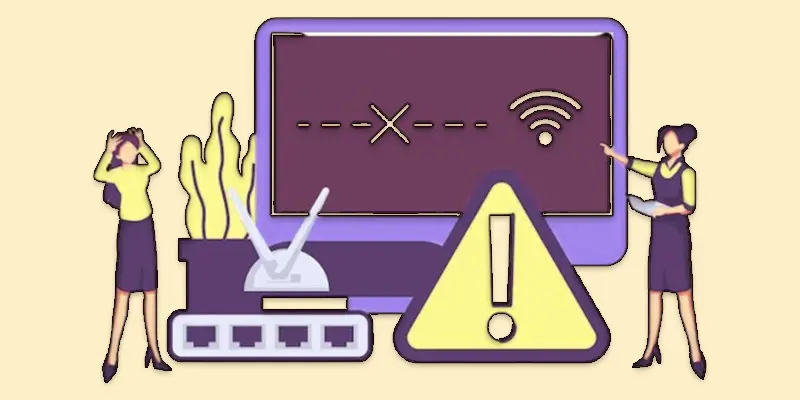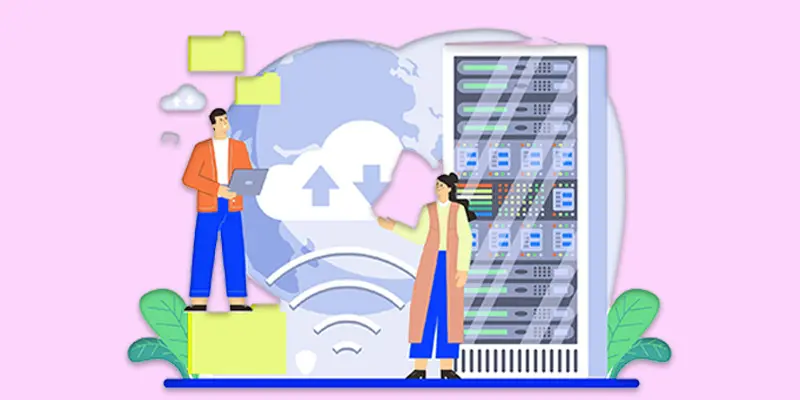Distributed Systems Explained | Real-Life Pros & Cons
Published: 23 May 2025
Advantages and Disadvantages Of Distributed Systems
Imagine you’re running a business and have two choices: manage everything from one central office or distribute tasks across multiple branches worldwide. A centralized system works like a single headquarters, controlling everything from one place. In contrast, a distributed system spreads the workload across multiple locations, ensuring better performance and fault tolerance. But is this always the best approach? While distributed systems offer scalability and reliability, they also come with challenges like complexity and security risks. In this blog, we’ll explore the advantages and disadvantages of distributed systems to help you understand when and why they might be the right choice.”
What are the Advantages and Disadvantages of Distributed Systems?
A distributed system is when different computers work together to complete tasks. This is like a team of people, where each person does a different job to make the work faster and more reliable. But, just like any system, distributed systems have both good and bad sides. Let’s break them down in easy terms.
Advantages Of Distributed Systems
- Scalability
- Reliability and Fault Tolerance
- Performance Improvement
- Resource Sharing
- Cost-Effectiveness
Scalability
Scalability means a system can grow and handle more work without slowing down. In a distributed system, tasks are shared among multiple computers. If more users join or data increases, new computers can be added to keep things fast. This makes the system flexible and efficient.
Example
Google and Amazon use distributed systems to manage millions of searches and orders daily. When traffic increases, they add more servers to keep everything running smoothly.
Reliability and Fault Tolerance
Reliability means a system can keep running smoothly without interruptions. Fault tolerance ensures that if one part of the system fails, others can take over without affecting the whole system. This is crucial for keeping services available at all times.
Example
Amazon uses a distributed system where if one server goes down, others quickly take over, so customers can continue shopping without noticing any issues.

Performance Improvement
Performance improvement in distributed systems happens when tasks are split across multiple machines, allowing them to work simultaneously. This speeds up the overall process and reduces waiting times. Instead of one machine doing all the work, many machines share the load, making the system faster.
Example
Netflix uses distributed systems to stream movies and shows to millions of users. By spreading the load across many servers, Netflix can deliver videos quickly without buffering, even during peak hours.
Resource Sharing
Resource sharing in distributed systems allows multiple users or devices to share computing power, storage, and network resources. Instead of having all resources on one machine, they are spread across many devices, making the system more efficient. This helps reduce costs and increases availability.
Example
Google Drive is a great example. Instead of storing all your files on one computer, it stores them on many servers. This way, you can access your files from anywhere, and Google can handle lots of users at the same time.
Cost-Effectiveness
Distributed systems are cost-effective because they use multiple smaller, cheaper machines instead of relying on one expensive computer. This approach helps businesses save money on hardware and maintenance. As the system grows, more machines can be added without major costs.
Example
Instead of purchasing a single high-priced server, Amazon uses many smaller servers in its data centers to handle traffic, making it more affordable and scalable.
Disadvantages Of Distributed Systems
- Complexity
- Security Risks
- Network Dependency
- Data Consistency Issues
- High Setup and Maintenance Costs
Complexity
Managing a distributed system is more complicated than a centralized system. It involves handling multiple machines that need to communicate with each other, ensuring they are all working together correctly. This requires specialized knowledge and tools to monitor, maintain, and troubleshoot the system.
Example
In a distributed database system, if one server goes down, the entire system needs to be reconfigured to avoid data loss or downtime, which requires expert intervention.
Security Risks
Distributed systems are more vulnerable to cyberattacks because data is stored across multiple machines and locations. This increases the chances of unauthorized access or data breaches. Securing all the nodes in the system can be challenging, especially when sensitive data is involved.
Example
A cloud storage service like Dropbox could be targeted by hackers to steal user data if proper security measures like encryption are not in place.

Network Dependency
For distributed systems to operate effectively, network connectivity is essential. The performance of the entire system may be affected if the network has problems, such as slow connections or outages.This dependency means that a stable, high-quality network is crucial for the system’s reliability.
Example
If the internet goes down, a cloud-based service like Google Drive may become inaccessible, preventing users from accessing or saving files.
Data Consistency Issues
In a distributed system, ensuring that all copies of data across multiple machines are updated at the same time can be difficult. This can lead to inconsistencies, where different parts of the system show different data. It’s a challenge to keep data synchronized, especially when there are network delays or failures.
Example
In e-commerce websites, if a customer purchases the last item in stock, other users might still see it as available due to delays in updating the inventory data across all servers.
High Setup and Maintenance Costs
Distributed systems require specialized hardware, software, and skilled IT professionals for setup and ongoing maintenance. The costs of purchasing multiple machines, setting up servers, and managing network infrastructure can be high. Additionally, regular updates and troubleshooting can further increase operational expenses.
Example
Large organizations like Facebook invest millions in maintaining their distributed server infrastructure to ensure smooth operation across the globe.
Examples of Distributed Systems in Real Life
- Cloud Computing (e.g., Google Cloud, AWS)
- Online Shopping Platforms (e.g., Amazon, eBay)
- Social Media Networks (e.g., Facebook, Twitter)
- Content Delivery Networks (CDNS), such as YouTube and Netflix
- Banking Systems (e.g., ATM networks, online banking)
- Peer-to-Peer File Sharing (e.g., BitTorrent)
- Smart Grids (e.g., energy distribution systems)

Conclusion About Pros and Cons of Distributed Systems
We’ve covered the Advantages and Disadvantages of Distributed Systems in detail. While distributed systems offer great benefits like scalability, reliability, and improved performance, they also come with challenges such as high costs and complexity. Personally, if you’re running a large-scale application or business, the advantages of a distributed system can far outweigh the drawbacks, especially if you have the resources to manage it. However, it’s important to carefully assess your specific needs before making a decision. I recommend exploring distributed systems for critical projects that require speed and reliability, but make sure you’re prepared for the additional setup and maintenance costs. If you’re ready to dive deeper, feel free to reach out with your questions or share your thoughts in the comments below!
FAQS
Advantages: Distributed systems improve performance by sharing workloads across multiple machines. They are scalable, reliable, and cost-effective.
Disadvantages: Managing multiple systems is complex and can be expensive. Security and network dependency are also common challenges.
Advantages: Distributed databases provide better performance and fault tolerance by storing data across multiple locations. They can handle large amounts of data efficiently.
Disadvantages: They can face issues with data consistency and are harder to manage due to their complex setup. Security risks can also increase as data is spread across different servers.
Advantages: DBMS provides data security, easy access, and supports data integrity. It makes managing large amounts of data easier and more efficient.
Disadvantages: DBMS can be expensive and requires skilled professionals to manage. The system’s performance can slow down with large data volumes.
Costly to Implement: Database systems require significant investment in hardware, software, and skilled personnel.
Complexity: Database system setup and maintenance can be challenging, particularly for large-scale applications.
Database Management System is the abbreviation for DBMS. It is software that facilitates effective data management, storage, and organization for simple management and access.

- Be Respectful
- Stay Relevant
- Stay Positive
- True Feedback
- Encourage Discussion
- Avoid Spamming
- No Fake News
- Don't Copy-Paste
- No Personal Attacks

- Be Respectful
- Stay Relevant
- Stay Positive
- True Feedback
- Encourage Discussion
- Avoid Spamming
- No Fake News
- Don't Copy-Paste
- No Personal Attacks





